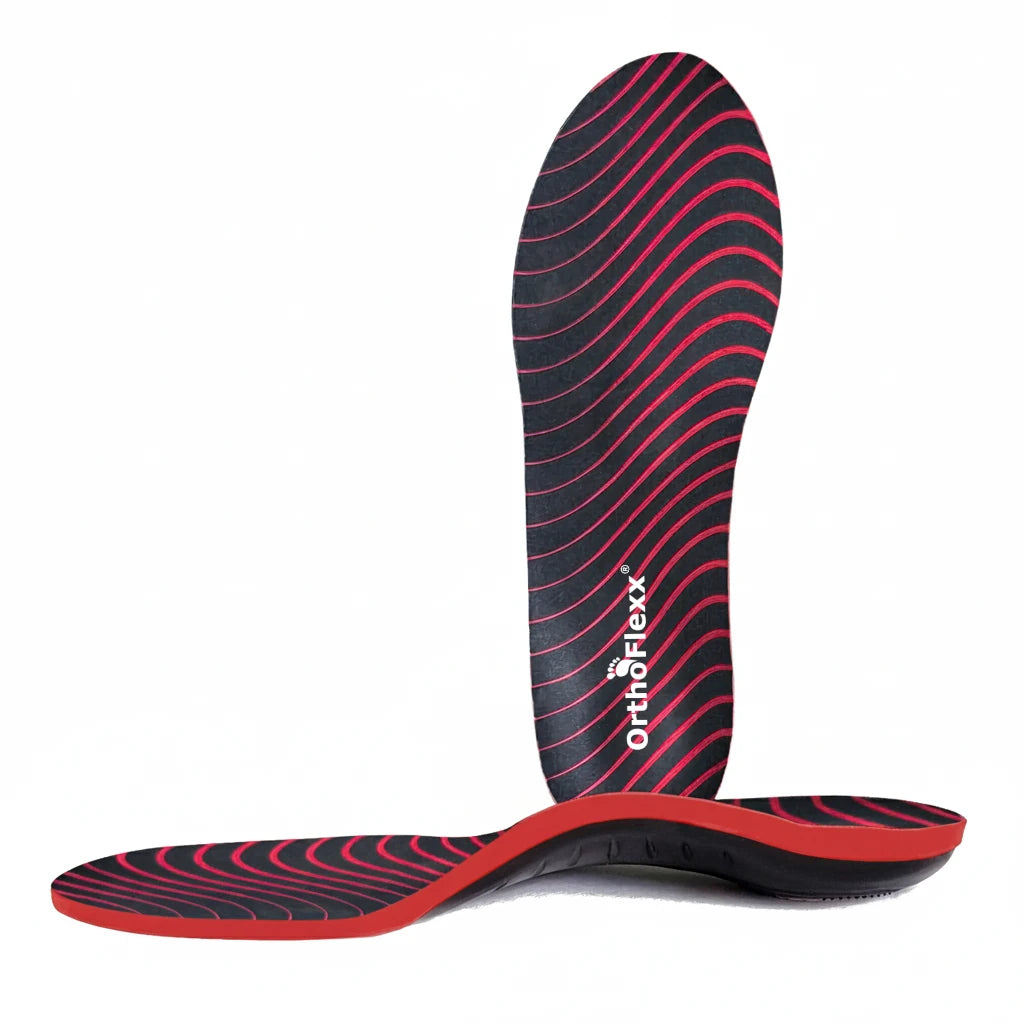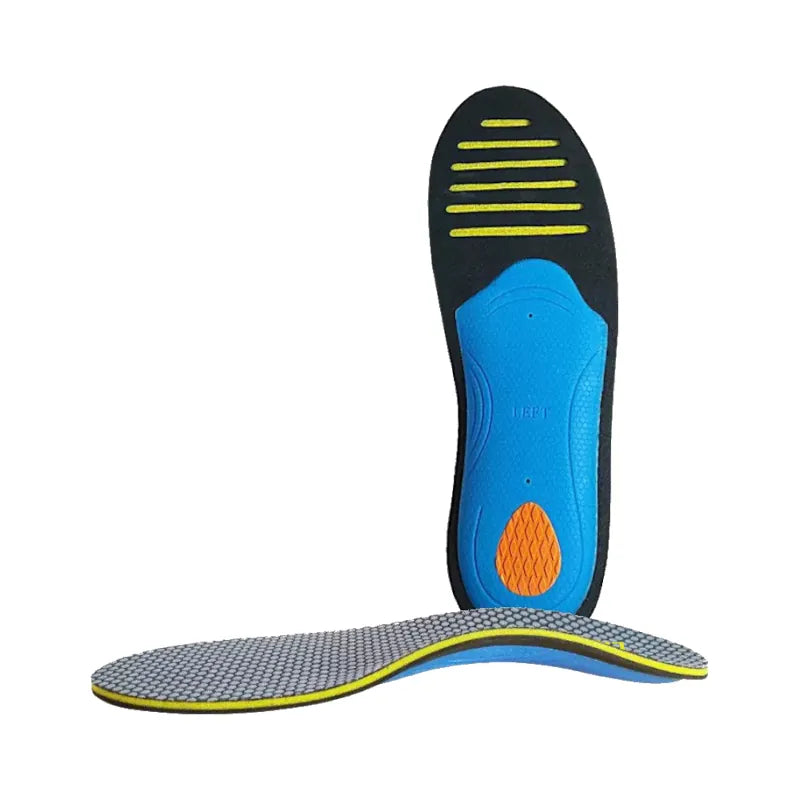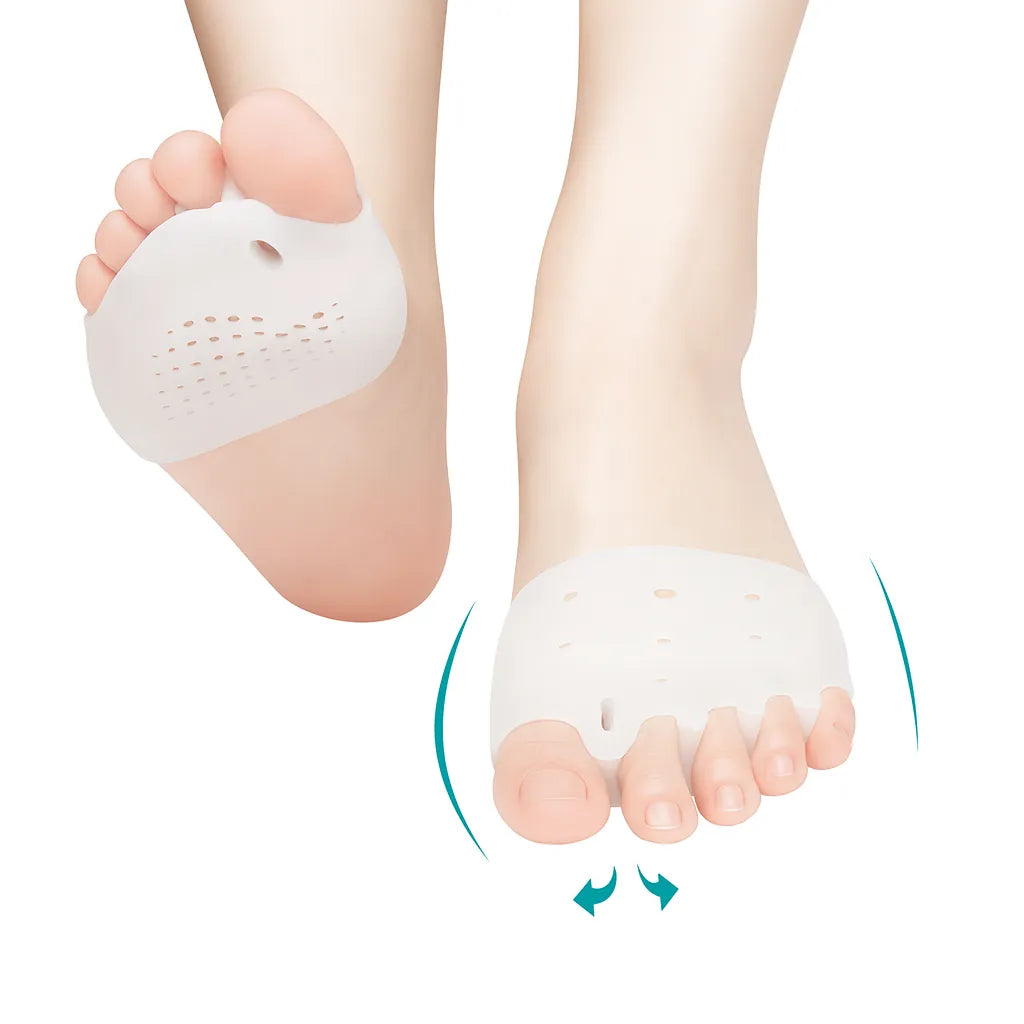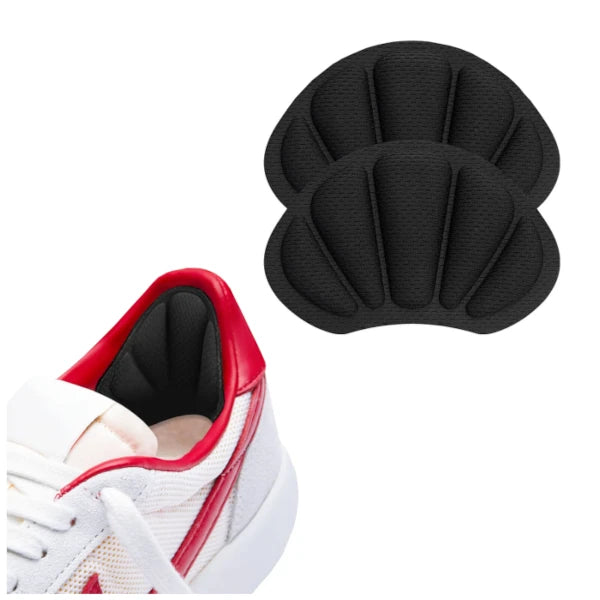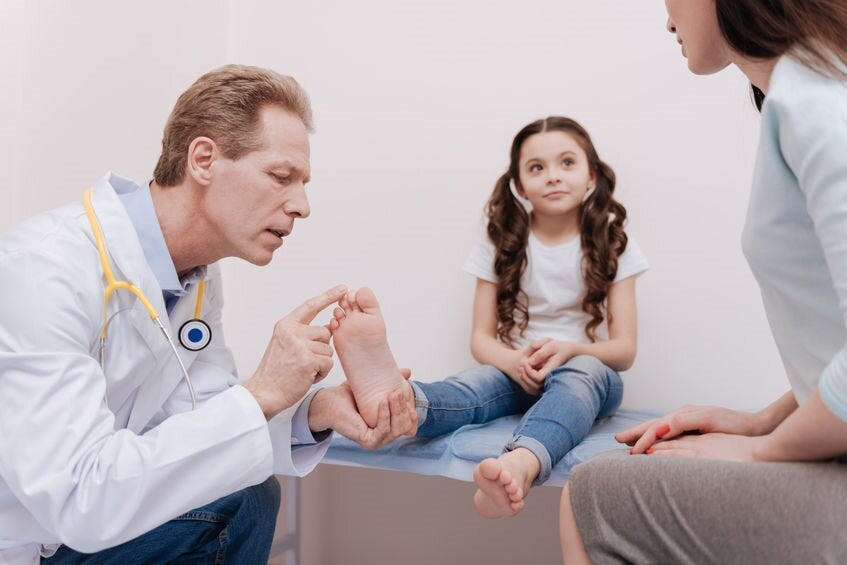
Foot Pain in Children: Common Issues and Solutions
Share
Child Foot Pain: Common Issues & Solutions
Foot pain in children is a common problem that should never be overlooked. Early identification and prompt treatment of foot problems can prevent long-term complications. Unlike adults, children's feet are still developing, making them more vulnerable to various conditions. Proper footwear and regular foot care play a crucial role in maintaining healthy feet during childhood.

From common causes like flat feet and ingrown toenails to more complex conditions such as bunions or growth plate injuries, understanding the symptoms and seeking timely diagnosis is essential. By addressing foot issues at an early age, we can mitigate potential risks and ensure proper development and growth of their feet.
Causes of Foot Pain in Children
Foot pain in children can be caused by a variety of factors. Let's take a look at some common issues that may lead to discomfort in their little feet.
Injury and Overuse
Children are known for their boundless energy and enthusiasm, which often translates into lots of physical activity. Unfortunately, this can sometimes result in foot injuries or overuse, leading to pain. Whether it's a sprained ankle from playing sports or simply spending too much time on their feet, these activities can take a toll on their delicate foot structures.
Growth Spurts
Growing pains are not just limited to the limbs; they can affect the feet as well. During growth spurts, bones and muscles are rapidly developing and adjusting, which can cause temporary foot pain. This discomfort is usually short-lived but can be quite bothersome for your child.
Poorly Fitting Shoes
Wearing ill-fitting shoes is a recipe for foot discomfort. Shoes that are too tight or too loose can lead to blisters, corns, calluses, and general soreness. It's essential to ensure that your child wears properly fitting shoes with adequate support and cushioning.
Medical Conditions
Certain medical conditions may contribute to foot pain in children. Flat feet, where the arches do not develop correctly, can cause strain on the ligaments and muscles of the feet. Gait abnormalities or walking irregularities may also result in foot discomfort.
Identifying the underlying cause of your child's foot pain is crucial in finding appropriate solutions to alleviate their discomfort.
Five Most Common Foot Problems in Children
Plantar fasciitis, ingrown toenails, Sever's disease, flat feet, and overpronation are some of the most common foot problems that children may experience.
Plantar Fasciitis
Plantar fasciitis is an inflammation of the tissue on the bottom of the foot. It can cause heel pain and discomfort for children. This condition often occurs due to repetitive stress or strain on the foot, such as from running or jumping activities.
Ingrown Toenails
Ingrown toenails happen when the edge of a toenail grows into the surrounding skin. This can be painful and may lead to infection if not properly treated. Tight shoes or improper nail trimming are common causes of ingrown toenails in children.
Sever's Disease
Sever's disease, also known as calcaneus apophysitis, is an inflammation of the growth plate in the heel. It typically affects active children during periods of rapid growth and who submit their feet to repetitive stress. Physical activities like running or jumping can exacerbate this condition, causing heel pain and discomfort.
Flat Feet
Flat feet occur when the arches of the feet do not develop properly. This can lead to potential gait issues and discomfort for children. While flat feet are common in infants and toddlers, some children may continue to have flat feet as they grow older which can be a risk factor for a variety of musculoskeletal conditions in the knees, hips, etc.
Overpronation
Overpronation refers to excessive inward rolling of the foot while walking or running. This can put strain on muscles and ligaments in the feet and lower legs, leading to pain and discomfort for children. Overpronation is often associated with flat feet, having identical consequences!
It's important for parents to keep an eye out for these common foot problems in their children. Early intervention and proper care can help alleviate pain and prevent further complications down the line.
Heel Pain Treatment
Rest and Avoiding High Impact Activities
To alleviate heel pain caused by Sever's disease or plantar fasciitis, it is crucial for children to rest and avoid high impact activities. This means taking a break from running, jumping, or any activity that puts excessive strain on the heels. By giving the heels time to heal and recover, the pain can gradually subside.
Applying Ice Packs to Reduce Inflammation
Another effective treatment for heel pain is applying ice packs to the affected area. The cold temperature helps reduce inflammation and soothe the pain. It is recommended to apply an ice pack wrapped in a cloth (to protect your skin) for about 15-20 minutes several times a day.
Physical therapy exercises
Engaging in physical therapy exercises that focus on strengthening the muscles of the feet and legs can significantly improve gait abnormalities. These exercises may include toe curls, heel raises, and ankle rotations.
Stretching exercises that specifically target the calf muscles can provide relief to the heel and feet in general. These exercises help improve flexibility and reduce tension in the Achilles tendon, which plays a role in varied conditions.
Physical therapists can create a customized treatment plan tailored to your child's specific needs.
Wearing Supportive Shoes with Cushioned Soles
Minimizing discomfort associated with heel pain can be achieved by wearing supportive shoes with cushioned soles. These types of shoes provide extra padding and shock absorption, reducing pressure on the heels. It is important for children to wear properly fitted shoes that offer adequate arch support to promote proper foot alignment.
Consider using arch-supporting orthotic inserts as they can provide relief for children with flat feet or gait issues. These inserts are designed to support the arches of the feet, promoting proper alignment and reducing discomfort. They can be inserted into most types of shoes, making them a convenient option for everyday use.
Tight-fitting shoes or improper nail trimming techniques
One common cause of ingrown toenails is wearing tight-fitting shoes or using improper nail trimming techniques. When your shoes squeeze your toes too tightly or you cut your nails too short or at an angle, it increases the chances of the nail growing into the skin.
Soaking in warm water with Epsom salt
If you're experiencing pain and swelling in your foot, a simple home remedy can provide relief. Soaking your affected foot in warm water with Epsom salt can help reduce inflammation and alleviate discomfort. The warm water helps to soften the skin around the ingrown nail, making it easier to gently lift it away from the skin.
Regular monitoring by healthcare professionals
Regular check-ups with healthcare professionals are essential to track any changes in foot structure or gait patterns. They can assess your child's progress, make adjustments to their treatment plan if necessary, and provide guidance on activities to avoid or engage in based on their condition.
Surgical intervention for severe cases
In some severe cases where home remedies, the use of insoles and physiotherapy don't provide relief, surgical intervention may be necessary to alleviate pain and prevent further complications.
Remember that if you suspect your children have one of these conditions, it's essential to consult a healthcare professional for proper diagnosis and treatment options.
By following these management tips, you can help your child find relief from foot pain caused by flat feet or gait issues. Remember to pay attention to their comfort levels during physical activities and consult with healthcare professionals if you have any concerns about their foot health.
Resolving Foot Pain in Children
Now that we have explored the causes and common foot problems in children, it's time to address how we can resolve their foot pain. Remember, prevention is key! Encourage your child to wear comfortable and supportive shoes that fit properly. Make sure they engage in regular physical activity to strengthen and stretch their feet and promote healthy development.

If your child is already experiencing foot pain, don't worry, there are a variety of options to reduce and treat heel pain. Remember, taking care of your child's feet now will set them up for a lifetime of active and pain-free movement. So don't hesitate to seek professional advice if needed!
FAQs
How can I tell if my child has flat feet?
Flat feet are characterized by little to no arches on the inside of the foot. You may notice that your child's entire foot touches the ground when they stand or walk. If you're unsure whether your child has flat feet or not, consult a healthcare professional who can perform a thorough examination.
Are there any home remedies for relieving foot pain in children?
Yes! For mild cases of foot pain in children, you can try soaking their feet in warm water with Epsom salt, massaging their soles, or applying ice packs wrapped in a cloth to reduce inflammation.
Is it normal for children to experience foot pain during growth spurts?
Yes, it is quite common for children to experience foot pain during periods of rapid growth. This is because their bones and muscles are adjusting to the changes happening in their bodies. However, if the pain becomes severe or persistent, it's best to consult a healthcare professional.
Can foot pain in children be prevented?
While foot pain can never be totally prevented, there are steps you can take to minimize the risk. Encourage your child to wear properly fitting shoes with good arch support, avoid excessive high-impact activities, and maintain a healthy weight.
When should I seek medical attention for my child's foot pain?
If your child's foot pain is severe, persistent, or accompanied by swelling, tingling, redness, or difficulty walking, it is important to seek medical attention. A healthcare professional can provide an accurate diagnosis and recommend appropriate treatment options.
Author Bio

Inês Pinheiro
Certified Physiotherapist for Shoulder and Knee Injuries
Inês is a skilled physical therapist with a special interest and extensive experience in working with athletes, specifically football players and also neurologic patients.
